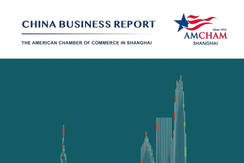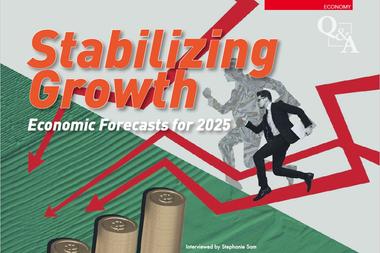

Andrew Atkinson is the senior marketing manager for Shanghai-based market strategy, research and branding agency China Skinny. Since 2016 he has led strategic projects across the China consumer landscape from fresh and packaged F&B, to tourism, health & fitness and beyond.
A quick Google search of this question in the ‘News’ tab summons 413,000 results. Yet when it comes to assessing what novel consumer behaviors are here to stay and what is but a distracting blip, one needs the proverbial storm to sufficiently pass. And not just in the epidemiological sense, but most critically in the hearts and minds of Chinese consumers.
As summer winds down, why is now the right time to start reflecting? Throughout July, we saw some significant moments that showed Chinese consumers were back in control:
- Mid-June’s second wave in Beijing was nerve-wracking, but in a strange way it may have helped speed up consumer activity. The feared ‘second-wave’ had lingered in the Chinese psyche for months. Yet it came and was quelled quickly, raising confidence that the government is prepared to handle future outbreaks.
- While controls took hold in Beijing, the 618 shopping festival netted $136.5bn in sales between Alibaba and JD, dwarfing respective Singles’ Day numbers from last year. Of course, this number is always inflated, as it doesn’t account for discounts, returned goods and most relevantly this year — vouchers sponsored by various government schemes to boost consumption. However, in the face of a global pandemic, the results were more than heartening.
- China’s Q2 GDP growth reached 3.2%, as the US announced a 32.9% dip over the same period. State media has amplified US economic decline amid China’s recovery, stoking national fervor.
My house, my castle
Even on a Purchasing Power Parity basis, China’s GDP per capita is only a third of the US’s. Take that back 10 or more years and the ratio was fractional. Consumers tended not to spend money on in-home upgrades but on purchases that more publicly showed off their wealth. With most everyone confined to their homes at the start of 2020, purchases shifted to upgrading homes and investing in in-home habits and activities. That change looks here to stay. A June-July China Skinny survey of 800 tier one and tier two consumers asked about eating habits both pre-COVID and for the next 12 months. Whereas pre-COVID respondents evenly split their time spent cooking at home vs eating out/deliveries, they expected that to shift closer to 75:25 over the coming year.
One of our clients in the tableware category has seized upon this opportunity. With subscriptions for cooking classes accelerating, they partnered with a fast-growing class provider to have their tableware products as part of the cooking/plating experience.
Growth in some categories is obvious. Home appliance sales have also skyrocketed throughout the year, as have fresh/grocery e-commerce platforms. Data shows that purification and sterilization air conditioner sales on JD.com increased 10 times YOY during June 1-2, while sterilization refrigerator and washing machine sales increased 550% YOY. Most critical for brands is to consider how and where consumers are now spending their days, be it for product opportunities or just more resonant marketing. Maia Active, a domestic activewear brand, has seen strong pick-up from its campaigns supporting in-home workouts (an ‘untapped activewear market’, as they put it) throughout the year. Les Mills, the global gym class guru, created a whole new direct-to-consumer model to cater to this need.
Is your product now more relevant for a consumer who spends more time at home? Consumers are open to creativity, and brands that show they intimately understand their changing needs will be rewarded.
Thrift shop
Who remembers eBay’s catastrophic failure in China? Three years ago, Alibaba held a press conference for one of their new VIP user programs. They invited a handful of consumers who had spent a minimum of 1 million RMB a year on Alibaba platforms onto the stage (the threshold for this VIP program). One proudly declared “I don’t ever wear the same outfit twice, so I end up spending a lot on fashion.” Everyone applauded in admiration.
Now, for the first time, the concept of ‘thriftiness’ has entered the consumer psyche with some measurable impact. Government researchers have predicted second-hand goods sales to top $141bn this year. The Alibaba second-hand goods platform XianYu kicked into gear in February and March, with users looking to ‘Marie Kondo’ their lives. The platform is increasingly investing in extra features and location-based functions to keep users’ attention and support the habit beyond just a COVID clear-out.
Keep in mind that most consumers in China have never before bought secondhand goods. Now that millions have taken the plunge on the platform (or elsewhere — WeChat groups have been brimming with secondhand sell-offs) and have had a positive experience with it, brands need to sense what this means for connecting with their consumers. Suddenly longevity is starting to climb up the list of needs for certain products. By no means does China have the ‘buy it for life’ mentality that you see in the West, but when paired with burgeoning messaging around sustainability, this area could quickly grow.

Livestreaming: why aren’t you doing it yet?
If you’re a brand operating in China, there’s a good chance livestreaming should be a significant part of your strategy. Yet only a few years ago, the world of livestreaming mostly just concerned hobbies, gaming, sports and teen culture. Livestreaming gained immense momentum from its dominating performance in last year’s Singles Day (half of all Tmall merchants employed live-streaming initiatives), but COVID has made it an unstoppable force.
Today nearly anything you can think of is livestreamed. Everyone from chefs broadcasting cooking lessons and farmers shifting their harvest, to agents flogging real estate or even heavily discounted multi-million dollar rockets. Professional livestreamers are now bonafide celebrities. One of the most powerful marketers in the world right now is Viya, who recently answered ‘less than 10 billion RMB’ when asked what she earned in the past year.
This shift was bound to accelerate. Livestreaming became a logical answer to those locked down at home looking for both a shopping fix and entertainment. These streams could be described as infomercials on steroids. Hosts put on a show that includes running through segments of brands, products or origins and engage with their audience, who feverishly enquire, comment and react in the hopes of netting extra discounts, free products or gifted money — or just purely for the fun of it.
Livestreaming’s authenticity will keep driving the platform forward. Nowhere else can consumers tune in and see the live, unedited application, consumption and usage of products.
One seafood brand has found great success in employing a livestreamer to stream 4-6 hours a day, every day, as a part of their Tmall flagship experience. Whenever viewers visit, they can jump in the livestream and see this familiar face cooking up something new, showing off recipes or thawing/handling methods, talking in detail about the products and answering live questions. In many ways it is the natural progression of customer service. For this brand, 15% of all orders are made through the livestream, and the average transaction is RMB 300, versus RMB 180 through the normal flagship experience.
There is a wide variety of dynamic opportunities available in China’s consumer market at the moment. With other export markets looking beleaguered, grabbing hold of the China market while it has momentum could be a game changer in these troubling times. As one China head in beauty tech recently said after his business went from $1m gross merchandising volume to $300m in three years: “The great thing in China is when your initiative fails, it fails quickly, and you can move on. But if it goes well, it could be the cornerstone of your global business.”
The article is from the Insight Magazine Sep/Oct 2020, you can download the whole issue here.

















